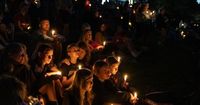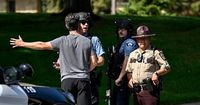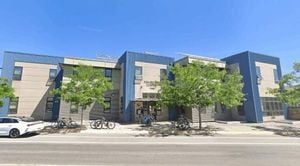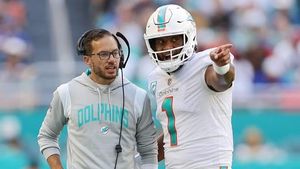On the morning of August 27, 2025, the city of Minneapolis was shattered by a tragedy that has since reverberated across the nation. As children gathered for a worship service marking the first week of school at Annunciation Catholic Church, gunfire erupted through the stained glass windows, turning a place of peace into a scene of chaos and heartbreak. By the time the shooting ended, two children—just eight and ten years old—were dead, and eighteen others, most of them children, were wounded. The shooter, identified as 23-year-old Robin Westman, died at the scene from a self-inflicted gunshot wound, leaving behind a community searching for answers, comfort, and justice.
According to BBC, the attack unfolded swiftly. Westman, dressed in black, approached the side of the church and fired dozens of shots through the windows using three firearms. The shooter, who graduated from Annunciation Catholic School in 2017 and was a former parishioner, had meticulously planned the assault. Investigators later found a manifesto timed to publish on YouTube at the moment of the shooting, which the FBI quickly took down. The planning went back at least a month, with notebooks and sketches—some written in Cyrillic—detailing possible targets and attack options, and even a hand-drawn diagram of the church’s interior created after a visit weeks earlier.
Law enforcement officials, including Minneapolis Police Chief Brian O’Hara, believe Westman intended to carry out the attack from inside the church. Security protocols, however, meant the doors were locked once Mass began, forcing Westman to shoot from outside. In a chilling detail, officials revealed that Westman had prepared wooden boards with smoke canisters to barricade emergency exits, a move that could have trapped even more children inside had the shooter gained entry. “The shooter did intend to get inside,” O’Hara told CNN, emphasizing that the locked doors likely prevented an even greater tragedy.
Inside the church, confusion and terror reigned. Ten-year-old Weston Halsne, a fifth grader, recounted to WCCO how he was sitting just two seats away from the windows when the shooting started. “It was like, shots fired and then we kind of like got under pews. They shot through the stained glass windows, I think, and it was really scary,” he said. In a moment of selfless bravery, Weston’s friend Victor shielded him from the bullets, taking a shot to the back but ultimately surviving. “My friend, Victor, saved me though, because he laid on top of me. But he got hit,” Weston recalled. “I was super scared for him. But I think now he’s OK.”
The rapid response by emergency medical services played a critical role in saving lives. Hennepin EMS, stationed just a few blocks away, transported the first patient within ten minutes of being called. Dr. Thomas Wyatt, chair of emergency medicine at Hennepin County Medical Center, described the aftermath: “Our hearts are broken for the families who have lost their children, as well as for the young lives fighting to recover and for the entire community that has been so deeply traumatized by this senseless attack.” The hospital treated nine patients, including children in critical and serious condition. One child remained “touch and go” the morning after, while others were expected to survive. At Children’s Minnesota Hospital, three children remained in care as of August 28, while four had been discharged.
Throughout the ordeal, teachers and staff emerged as heroes. “Teachers were amazing,” said Hennepin EMS Chief Martin Scheerer at a news conference, as reported by CNN. “The teachers were getting shot at. They were protecting the kids.” In one instance, a nurse manager even climbed into a CT scanner with a frightened child to comfort them, putting herself at risk of radiation exposure. Such acts of compassion and courage were echoed by many throughout the school and community.
As the investigation unfolded, disturbing details emerged about the shooter’s motives and preparations. The manifesto and messages found on ammunition and firearms included racist, antisemitic language, and even a call for the killing of former President Donald Trump. The FBI has classified the incident as an act of domestic terrorism and a hate crime targeting Catholics. Westman, whose name was legally changed from Robert to Robin in 2020 to reflect a female identity, had no extensive criminal history. The shooter’s mother, Mary Grace Westman, had previously worked at the school, deepening the community’s sense of shock and betrayal.
The attack triggered a massive law enforcement response, with West 54th Street between Harriet and Garfield avenues swarming with police and emergency vehicles. Minnesota Governor Tim Walz deployed 14 State Patrol troopers and six Department of Natural Resources enforcement officers to bolster security around schools and places of worship in Minneapolis. “Our presence is about more than patrols—it’s about letting the people of Minneapolis know they are not alone,” State Patrol Col. Christina Bogojevic said in a statement.
In the aftermath, grief and solidarity have poured in from across the country. Archbishop Bernard Hebda announced that the Holy Father imparted an Apostolic Blessing to the Annunciation Catholic School community and the greater Twin Cities area. Outside the church, a growing memorial of flowers, stuffed animals, and handwritten notes has taken shape. Two white crosses stand in honor of the young victims, their names withheld but their loss deeply felt. A note from the Uvalde community, itself scarred by a school shooting in 2022, reads: “We get it. With love, Uvalde.”
The trauma has left many families struggling to cope. One parent told CNN that their 12-year-old daughter is now too anxious to return to the school or church. Principal Matt DeBoer, speaking at a press conference, addressed the community with raw emotion: “I love you, I’m so sorry this happened today.” He urged people to “pray with our feet,” calling for action to prevent future tragedies. The timeline for resuming classes at Annunciation School remains uncertain, as the community continues to mourn and heal.
For many, the pain is compounded by the sense of déjà vu. Mark Barden, whose son was killed at Sandy Hook Elementary in 2012, told CNN, “This is not something that I went through 13 years ago. This stays with you forever.” He urged the Minneapolis community to support one another and to work together to prevent such violence from recurring. As Minneapolis grapples with the aftermath, the resolve to honor the victims and protect its children has never felt more urgent.
In the shadow of unimaginable loss, Minneapolis stands united—grieving, supporting, and determined to chart a safer path forward for its children and its future.






